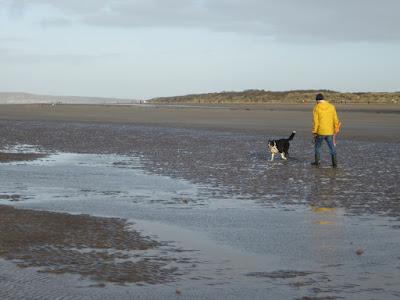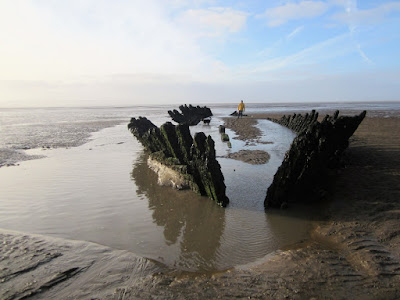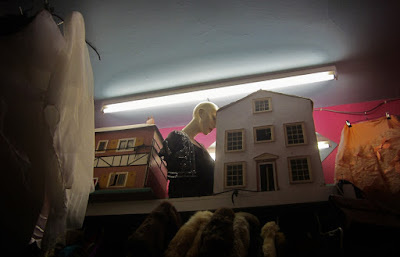 A Seax hilt plate
A Seax hilt plate A Seax is a type of single-edged dagger. The pattern on this hilt plate is of running animals, each holding the hind leg of the one in front in its mouth.
If, like me, your knowledge of the Dark Ages is at best sketchy, there's lots of useful information about the various parts of the sword, and a potted history, from the departure of the Romans in 410AD to the invasion of the Normans, which helps put the exhibits in context. (The hoard is believed to have been buried approximately midway through this period, around 1300 years ago.) But it's the timeless skill of the goldsmiths that is so memorable - the finest of work wrought without aid of magnification, electric light or sophisticated tools. It's fascinating and breathtaking, and reminded me of the examples of embroidery worked by Bess of Hardwick's servants, on show at Hardwick Hall, only older and goldier.
As you can see, my photos aren't very good on account of the very small size of the exhibits and the darkness necessary to show them to full advantage. There's plenty of better ones on the Staffordshire Hoard website.
What I found most affecting is that almost all the pieces are in a damaged or fragmentary state. They're the spoils of war, ripped from the weapons of dead or dying men and buried for later retrieval - although probably not as late as 5th July 2009, which is when they were discovered by heroic metal detectorist, Terry Herbert. The detail of each design depicts the original owner's status, wealth, family and even his religious beliefs - knowledge lost to us for ever.
Anyway, I highly recommend this exhibition even if you don't watch Game of Thrones. It runs until 23rd April, but the presbyopic attendee is going to need their reading glasses to get the full benefit of what's on display.


























































